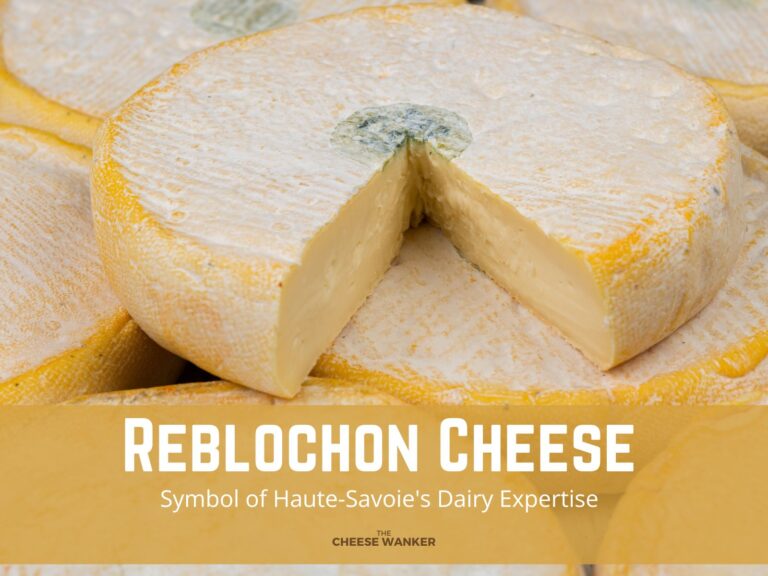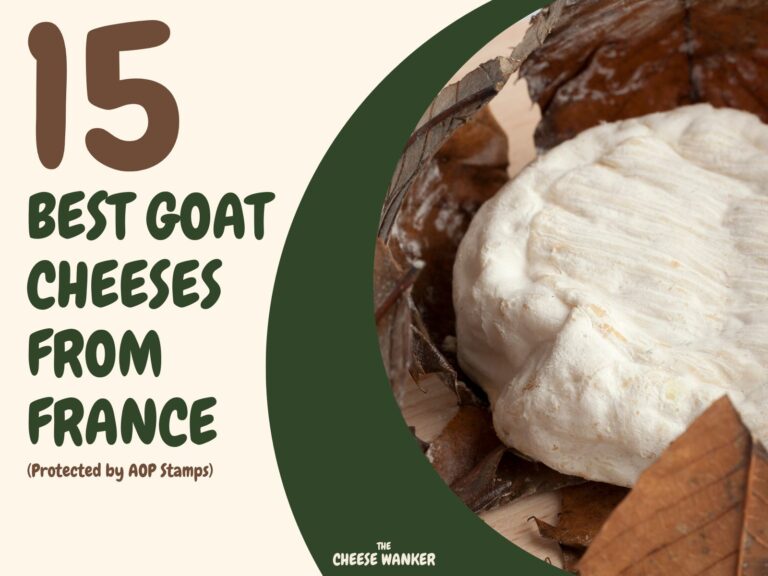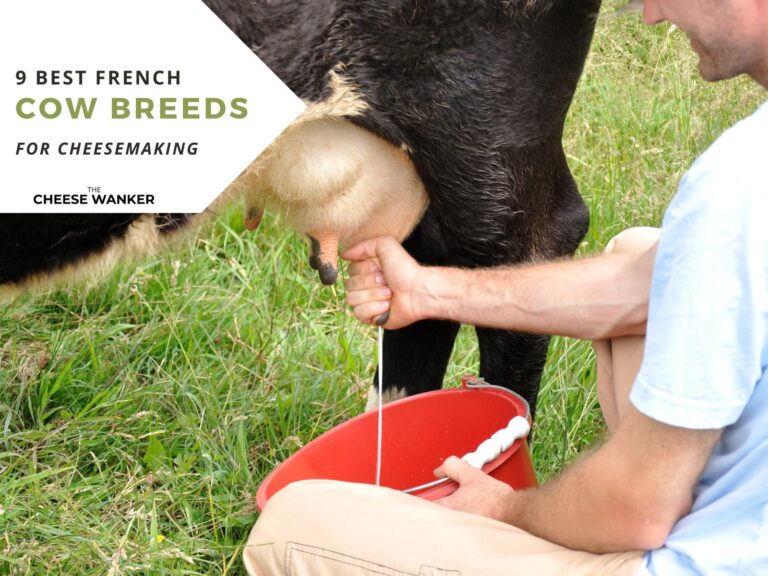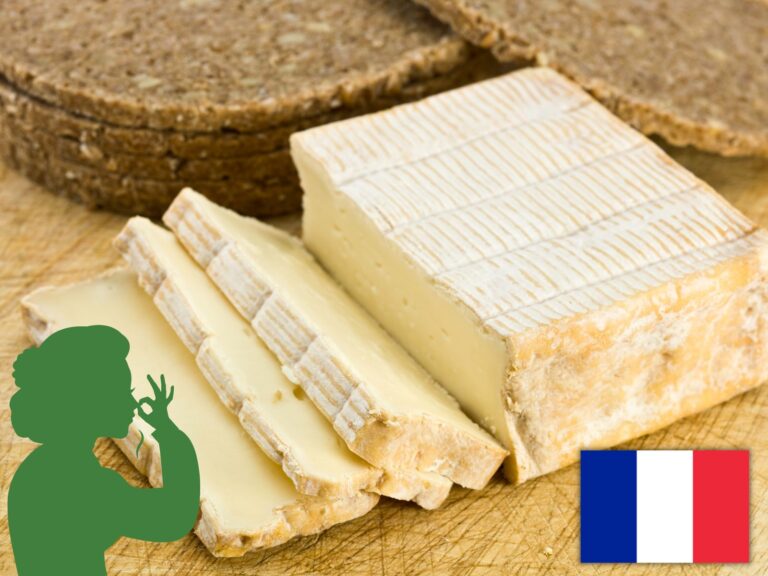Nestled within the heart of French culture, the art of cheesemaking is a timeless tradition, intricately woven into the fabric of every season. From the frosty days of January to the golden hues of October, each month brings forth its own selection of cheeses, reflecting the changing climate and culinary festivities. Read on for our list of the best seasonal French cheeses.
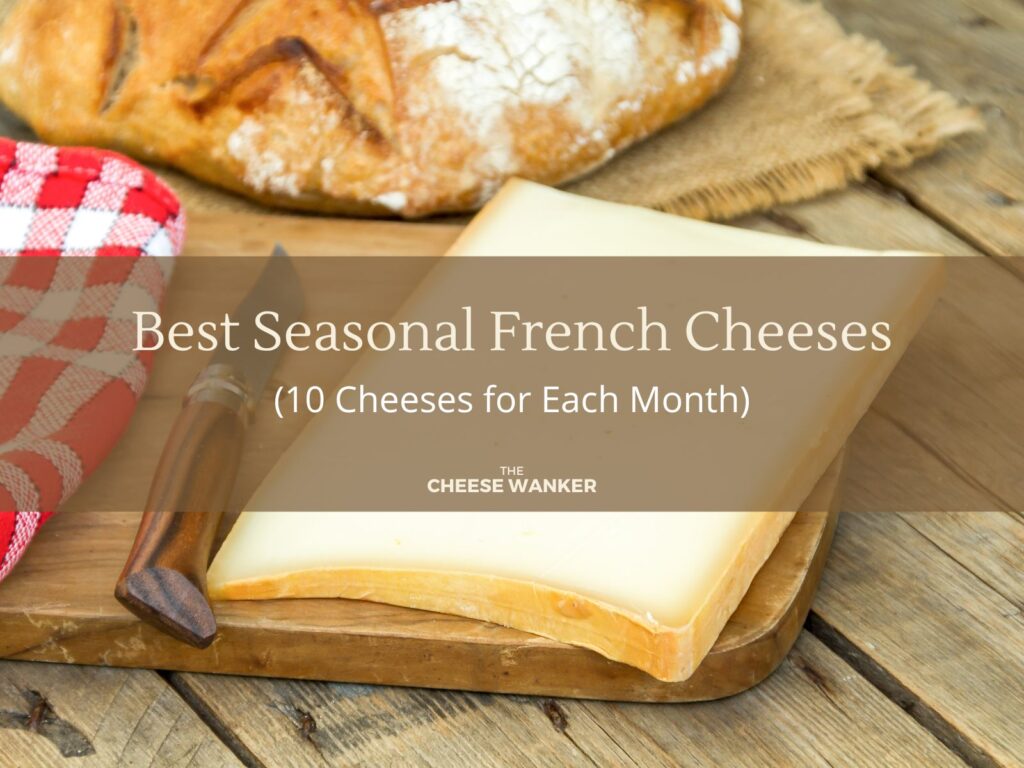
SEE ALSO: The 46 best protected cheeses that are made in France →
Factors that affect the seasonality of cheese
There are many factors that determine when particular cheeses can be produced in France. Those can include everything from the climate to lactation cycles and legal aspects. Let’s have a look at some of the most important ones.
Milk availability: when cheese can be made
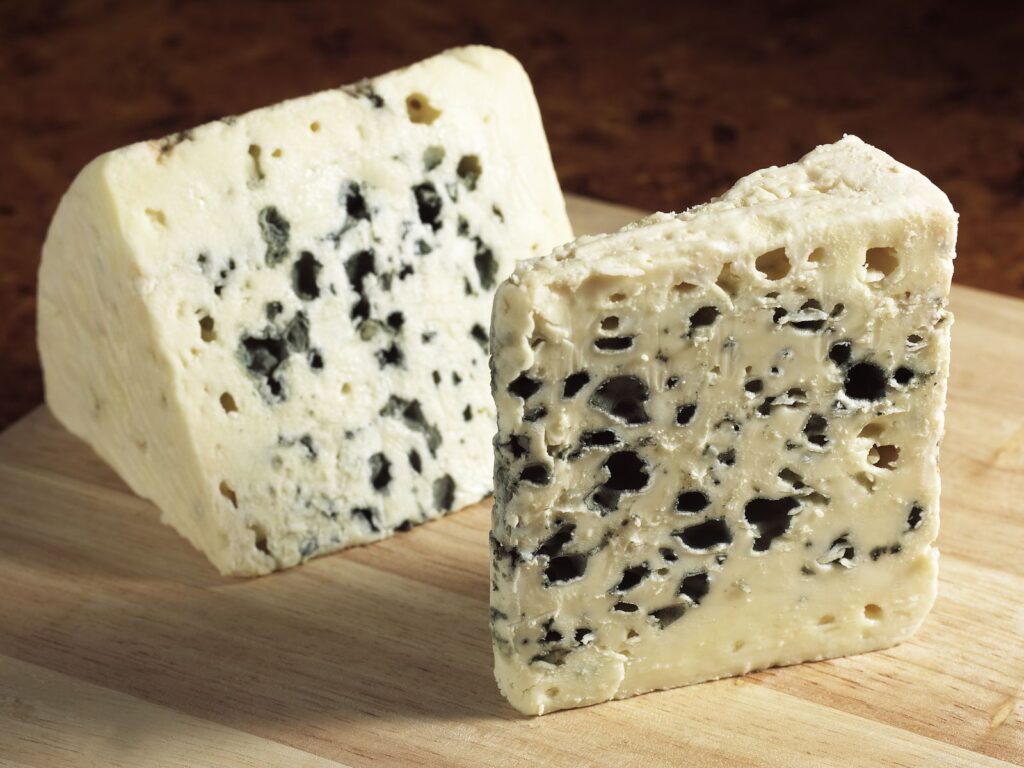
Unsurprisingly, to make cheese, you need to have milk. And the availability of milk varies throughout the year, depending on the animals’ lactation cycles. In France, most cheeses are made using cow, goat or sheep milk. For the former, milk availability is not so much of an issue because cows produce milk for 10 out of 12 months.
On the other hand, goats and sheep have much shorter lactation periods. Those can last from eight to nine months but vary depending on the breed and animal. Hence, goat and sheep’s milk cheeses can only be produced during those months.
Now, cheese production and cheese availability are two very different things. What I mean by this is that two cheeses that are produced at the same time, might not be available for consumption at the same time. The disparity comes down to the different maturation times for different cheeses.
Therefore, a Brie de Meaux that was made in August will be released for sale around six weeks later in mid-September. Whereas a Roquefort also produced in August will only be available in November (90 days later).
What the animals eat: what the cheese tastes like
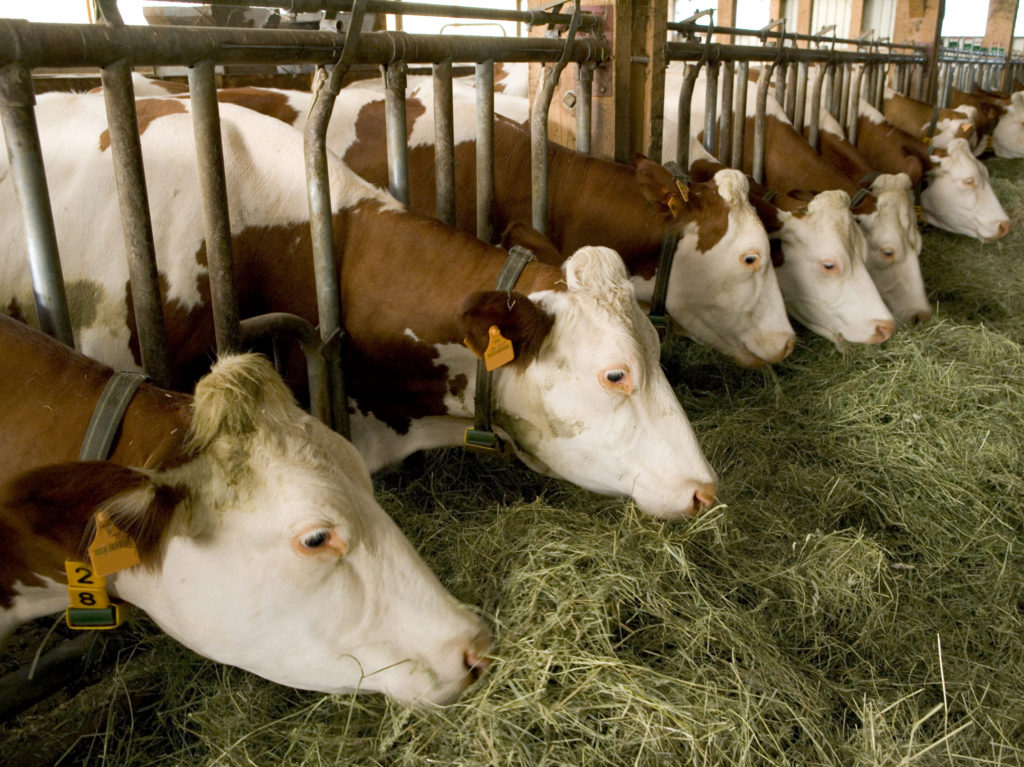
In many ways, the seasonality of cheese is linked to the seasonality of milk. And this is largely impacted by what the animals eat. In the case of French sheep, they feed on grass pastures for most of the summer months.
As a result, the best batches of sheep’s milk cheeses such as Roquefort are produced at the end of summer (July/August). And they are released for consumption 90 days later, in time for Christmas.
With cow’s milk cheeses such as Beaufort, the best milk is collected during the autumn months. During that time, the cows graze freely on mountain pastures and produce a rich high-quality milk. And Beaufort that is made from June to October is called Beaufort d’Été (Summer Beaufort).
AOP restrictions
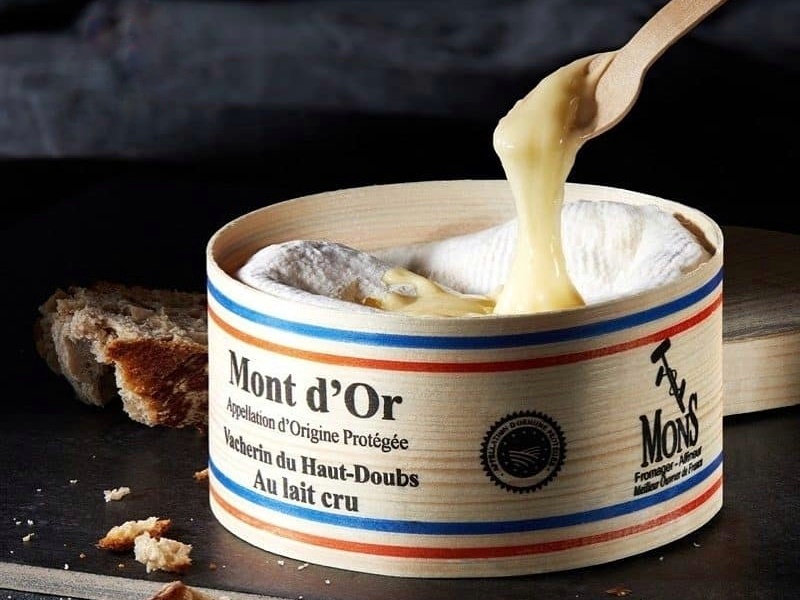
Taking into account the two factors we’ve just discussed, the AOP has set clearly defined production windows for some cheeses. The perfect example here is Mont d’Or.
The AOP stipulates that cheesemakers in the Haut-Doubs region of France can only produce this unique cheese between the 15th of August and the 15th of March.
As a result, you can only buy Mont d’Or from the 10th of September to the 10th of May each year. You can read more about the Holy Grail of cheese by clicking here.
Best French cheeses for each month of the year
Now that we’ve discussed the reasons for seasonality, let’s have a look at which cheeses are at their peak for each month of the year.
January
In the heart of winter, January in France brings a chill to the air, and it’s the perfect time to indulge in the hearty delights of Raclette de Savoie, Comté, and Beaufort d’Été.
Raclette de Savoie, with its creamy, melt-in-your-mouth goodness, is a quintessential winter cheese. Originating from the Alpine region, it’s traditionally melted and scraped onto a plate of steaming potatoes, cured meats, and pickles. All together, you’ve got yourself an indulgent feast perfect for warming up during the cold season.
Comté, with its firm texture and nutty, sweet flavours, adds depth to January’s cheeseboard. Aged in the Jura Mountains, it pairs wonderfully with crusty bread and a glass of white wine, making it a comforting choice for long winter evenings.
Lastly, Beaufort d’Été, a summer version of the famous Beaufort cheese, offers a taste of the Alpine pastures during the colder months. Its floral and fruity notes, along with a smooth texture, provide a unique contrast to the winter landscape.
While the holiday festivities may have tapered off, these three Alpine cheeses continue to shine, offering warmth and flavour to January’s culinary adventures.
Best French cheeses for January
- Beaufort d’Été
- Brocciu
- Cantal
- Chevrotin
- Comté
- Mont d’Or
- Munster
- Raclette de Savoie
- Rigotte de Condrieu
- Salers
February
The month of February brings an air of romance, and what better cheese to spotlight during this time than Neufchâtel cheese?
This heart-shaped delight, originating from Normandy, embodies the spirit of Valentine’s Day. Neufchâtel is known for its rich, creamy texture and mild, slightly tangy flavour, making it a symbol of love and indulgence.
Whether enjoyed as a decadent dessert with fresh berries and a drizzle of honey or as a savoury treat on a cheese platter with sparkling wine, Neufchâtel adds a touch of romance and elegance to your February celebrations.
Best French cheeses for February
- Beaufort d’Été
- Brocciu
- Cantal
- Chevrotin
- Comté
- Mont d’Or
- Munster
- Neufchâtel
- Raclette de Savoie
- Salers
March
With the promise of spring in the air, March is the ideal time to explore the distinct charms of Camembert de Normandie, Salers and Brillat-Savarin.
Camembert de Normandie, the quintessential French cheese, boasts a creamy, bloomy rind that encapsulates the essence of the season. As the days lengthen, this cheese offers a delightful combination of earthiness and mild sweetness. Enjoy it with fresh baguettes and a glass of crisp Normandy cider for a taste of springtime bliss.
Salers, an ancient cheese from the Auvergne region, provides a robust contrast with its firm texture and rich, nutty flavours. Crafted during the summer months when cows graze on mountain pastures, it offers a taste of the alpine meadows, even as the weather begins to warm.
March is the perfect time to eat Salers with crusty bread and a bold red wine, celebrating the transition from winter to spring.
Finally, Brillat-Savarin graces our tables with its luscious, triple-cream texture and delicate, buttery flavour. This decadent cheese, created in the heart of Burgundy, embodies indulgence and is a superb choice for springtime celebrations.
Pair it with ripe strawberries and a glass of Champagne, embracing the renewed vibrancy that March brings to our culinary experiences.
Best French cheeses for March
- Brie de Meaux
- Brillat-Savarin
- Camembert de Normandie
- Chabichou du Poitou
- Maroilles
- Morbier
- Neufchâtel
- Rocamadour
- Salers
- Valençay
April
As temperatures continue to rise and spring unfolds its beauty, April is the perfect time to indulge in the luxuriously creamy Brie de Meaux and the delectable Saint-Marcellin.
Brie de Meaux, hailing from the Île-de-France region, epitomises elegance with its soft, velvety texture and a rich, mushroom flavour that evokes the blooming season.
Whether paired with fresh baguettes or spread on crisp crackers, this classic French cheese adds a touch of sophistication to springtime gatherings, celebrating the return of warmth and sunshine.
In contrast, Saint-Marcellin, a small and rustic cheese from the Rhône-Alpes region, brings a delightful earthiness to your cheeseboard. With its creamy paste and slightly tangy flavour, it captures the essence of the awakening countryside. Enjoy it alongside fresh spring greens or a glass of fruity Beaujolais, creating a harmonious blend of flavours that mirror the season’s renewal.
April is a time for culinary indulgence, and these two cheeses epitomize the spirit of the season, making it a delightful time for cheese enthusiasts.
Best French cheeses for April
- Banon
- Bleu d’Auvergne
- Brie de Meaux
- Camembert de Normandie
- Langres
- Livarot
- Morbier
- Pont l’Evêque
- Saint-Marcellin
- Tomme de Savoie
May
May is a month of abundance, with lush green pastures providing the ideal conditions for cheesemaking. And during this season, Sainte-Maure de Touraine shines.
Hailing from the picturesque Loire Valley, this cylindrical goat cheese, distinguished by the characteristic straw running through its centre, is a gourmet delight. With May’s bounty, Sainte-Maure de Touraine reaches its peak, offering a tangy and earthy flavour profile with subtle herbal notes.
Its creamy interior contrasts beautifully with the edible rind, making it a must-have for cheese enthusiasts.
In addition to celebrating May Day with dancing around the maypole, the French also savour the delicate flavours of Sainte-Maure de Touraine in salads and on cheese platters. Or paired with Loire Valley wines, creating a culinary celebration of springtime.
Best French cheeses for May
- Banon
- Bleu des Causses
- Charolais
- Emmental de Savoie
- Epoisses
- Fourme d’Ambert
- Mâconnais
- Picodon
- Pouligny-Saint-Pierre
- Sainte-Maure de Touraine
June
With the arrival of June, the stage is set for two exceptional French cheeses to shine: Valençay and Rocamadour.
Valençay, with its iconic truncated pyramid shape and ashy coating, graces our tables during this time. Made from goat’s milk, Valençay boasts a bright, citrusy flavour with herbal undertones. Moreover, its unique appearance and exquisite taste make it a centrepiece of summer cheeseboards, whether paired with fresh garden herbs or enjoyed alongside crisp rosé wine.
Meanwhile, Rocamadour, a small, creamy cheese hailing from the Midi-Pyrénées region, is another June highlight. Its miniature disc-like shape and luscious texture create a delightful contrast to Valençay.
With a mild, nutty flavour and a hint of tanginess, Rocamadour is perfect for serving on warm summer evenings with a drizzle of local honey and a glass of Sauvignon Blanc.
Without a doubt, both cheeses capture the essence of June’s vibrant and sun-kissed days, offering a taste of the French countryside at its best.
Best French cheeses for June
- Banon
- Fourme d’Ambert
- Ossau-Iraty
- Pouligny-Saint-Pierre
- Rigotte de Condrieu
- Reblochon
- Rocamadour
- Sainte-Maure de Touraine
- Saint-Nectaire
- Valençay
July
Summer in France means holidays, beachside picnics and a perfect opportunity to savour Abondance cheese.
This semi-hard, mountain cheese from the Savoie region truly comes into its own during July. With its firm yet supple texture and a flavour profile that boasts nutty and fruity notes, Abondance is the epitome of summer indulgence.
Whether you’re picnicking in the Alps or by the Mediterranean, this cheese pairs wonderfully with fresh baguettes, crisp apples and a chilled glass of French white wine.
July also brings Bastille Day on July 14th, where fireworks light up the summer night sky in celebration of French culture and cuisine.
Best French cheeses for July
- Abondance
- Fourme d’Ambert
- Mimolette
- Pouligny-Saint-Pierre
- Reblochon
- Rocamadour
- Sainte-Maure de Touraine
- Saint-Nectaire
- Selles sur Cher
- Valençay
August
August ushers in the peak of summer, and it’s the perfect time to savour the delightful contrasts of Morbier and Ossau-Iraty cheeses.
Morbier, a semi-soft cow’s milk cheese, hailing from the Franche-Comté region, is known for its distinctive horizontal ash line running through its centre. With a creamy texture and a mild, nutty flavour, Morbier captures the essence of leisurely summer days.
It pairs beautifully with fresh summer fruits, like peaches and apricots, and a glass of chilled Chardonnay.
On the other hand, Ossau-Iraty, a Basque cheese made from sheep’s milk, offers a rich and complex flavour profile with hints of caramel and earthiness. Its firm, yet creamy texture makes it an excellent companion to summer picnics, rustic bread, and a bottle of robust red wine.
Together, Morbier and Ossau-Iraty celebrate the diversity of French cheeses, bringing together the lush pastures and flavours of August’s warm and sunny days.
Best French cheeses for August
- Abondance
- Comté
- Emmental de Savoie
- Mimolette
- Morbier
- Ossau-Iraty
- Raclette de Savoie
- Selles sur Cher
- Tomme de Savoie
- Valençay
September
As autumn arrives with its changing leaves and cooler temperatures, it’s the perfect time to enjoy the unique and delicious Langres cheese.
Hailing from the Champagne region of France, Langres cheese is a true autumn delight. Its small, round shape with a concave top is not only visually striking but also serves as a reservoir for Champagne or Marc de Bourgogne.
With a creamy, rich texture and a subtle yet complex flavour profile, Langres pairs beautifully with crusty bread and a glass of Champagne, making it an ideal choice for celebrating the transition to fall.
September also marks the grape harvest season in many parts of France, offering an excellent opportunity to enjoy Langres cheese alongside the newly pressed grape juices and the first wines of the season.
Best French cheeses for September
- Abondance
- Comté
- Langres
- Livarot
- Maroilles
- Mimolette
- Ossau-Iraty
- Raclette de Savoie
- Saint-Marcellin
- Tomme de Savoie
October
As the leaves turn to shades of gold and rust, October invites us to embrace the warm and inviting flavours of Mimolette cheese.
Hailing from the northern regions of France, Mimolette is a captivating cheese with a distinctive orange hue, resembling a pumpkin in its colouration. This hard cheese boasts a nutty, savoury profile with a hint of caramel, making it a delightful choice for the cosy autumn months.
Whether grated over hearty soups, paired with crisp apples, or enjoyed alongside a glass of red wine, Mimolette adds a unique depth of flavour to fall feasts.
As Halloween approaches, consider incorporating this cheese into your spooky-themed parties, as its vibrant orange hue can make for a visually striking addition to your cheese platters.
Best French cheeses for October
- Abondance
- Brie de Meaux
- Camembert de Normandie
- Comté
- Epoisses
- Mimolette
- Mont d’Or
- Rocamadour
- Roquefort
- Saint-Nectaire
November
As the chill of November sets in, it’s the perfect time to discover the rich and earthy flavours of Saint-Nectaire cheese.
Hailing from the volcanic Auvergne region of France, Saint-Nectaire is a true autumnal delight. Its supple, creamy texture and distinct orange rind give way to a beautifully balanced flavour profile. Look out for notes of mushrooms, forest floor and a hint of nuttiness.
This cheese pairs wonderfully with crusty baguettes, dried fruits and a glass of robust red wine, making it an ideal choice for warming gatherings as the days grow shorter.
November also marks the season for Beaujolais Nouveau, a celebration of the new wine release, and Saint-Nectaire’s complex flavours make it an excellent companion to the festivities, adding depth to your cheese and wine pairings.
Best French cheeses for November
- Comté
- Fourme d’Ambert
- Mont d’Or
- Morbier
- Ossau-Iraty
- Raclette de Savoie
- Roquefort
- Salers
- Saint-Nectaire
- Tomme de Savoie
December
As the year draws to a close, December offers a delectable opportunity to celebrate the holidays with two iconic French cheeses: Roquefort and Tomme de Savoie.
Roquefort, the king of blue cheeses, hailing from the limestone caves of southern France, embodies the season’s elegance with its creamy texture and bold, tangy flavour profile.
It’s the perfect companion for end-of-year cheese platters, harmonising wonderfully with sweet preserves and a glass of Sauternes.
On the other hand, Tomme de Savoie, a semi-soft cheese from the French Alps, brings a rustic charm to December’s table. With its earthy, nutty undertones and a creamy interior, it pairs wonderfully with crusty bread, winter fruits, and a glass of red wine.
Whether you’re celebrating Christmas, Hanukkah, or New Year’s Eve, incorporating Tomme de Savoie into your holiday spread adds a cosy, alpine touch to your festivities, perfectly complementing the season’s warmth and togetherness.
Best French cheeses for December
- Beaufort d’Été
- Bleu des Causses
- Comté
- Emmental de Savoie
- Mont d’Or
- Morbier
- Ossau-Iraty
- Roquefort
- Salers
- Tomme de Savoie
Conclusion
As we wrap up our tour through the seasons of French cheese, we are reminded of the profound connection between culture, climate and cuisine. From the snowy landscapes of winter to the vibrant blooms of spring and the sun-drenched days of summer, each month unveils a different chapter in the story of French cheesemaking.
Whether you’re savouring Raclette by a warm fireplace or enjoying Camembert in a sun-drenched garden, the world of seasonal cheeses in France is a true culinary treasure. So, as the seasons change, let your palate journey through this flavourful mosaic, and may you find joy in every bite.
Now, we’d love to hear from you: What’s your favorite seasonal French cheese? Share your thoughts and experiences with us in the comments below!

